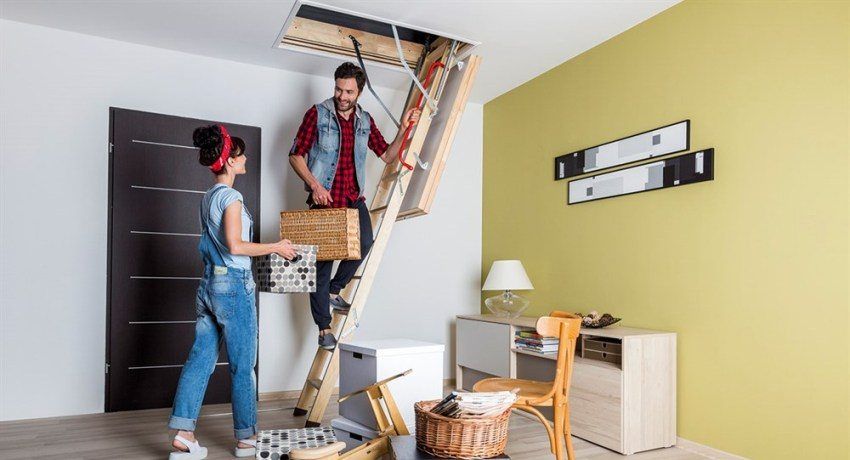Grounding is a necessary measure in any private house or apartment. It guarantees the safety of the use of electrical appliances and protects against the risk of short circuits. If you need to do the grounding in a private house with your own hands: 220V and 380V are two networks, for which you will need to perform different actions for grounding. For the first option, normal zeroing without mounting the contour is suitable, but for the second, the grounding contour is mandatory.
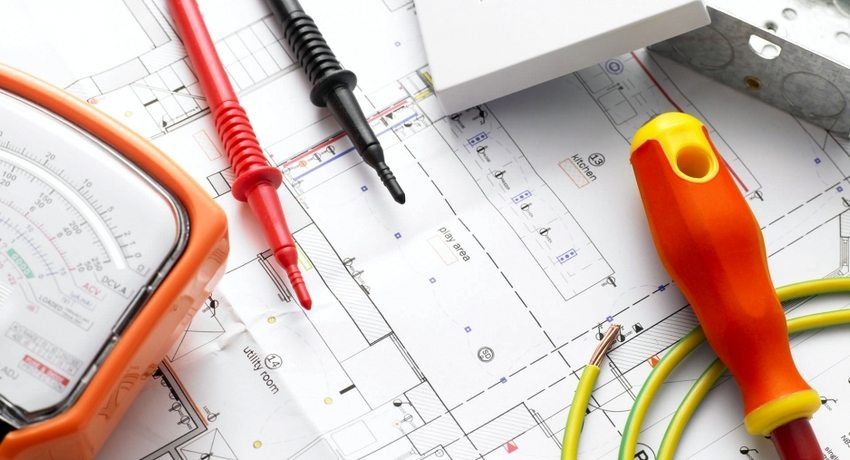
Why do I need a ground loop
Electric current can be deadly for a person – this is a well-known fact. As a result of an emergency situation, the body of an electrical device may become energized, due to which touching it will become a threat to life and health. Installing 220V grounding in a private house with your own hands helps to avoid this risk.
How it works? The surface of electrical equipment becomes dangerous when the zero phase ends. The ground loop just plays the role of a phase through which electricity goes into the ground.
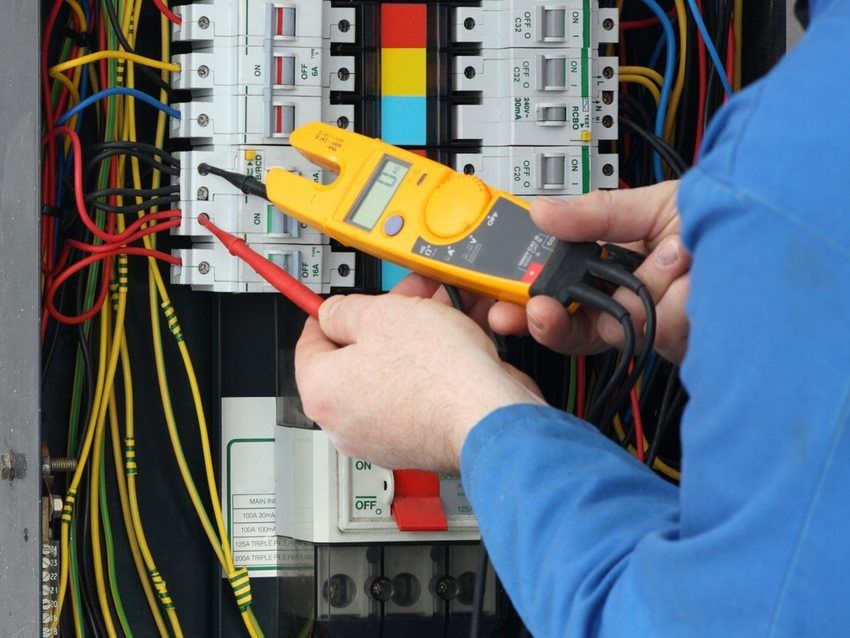
The grounding device is necessary not only for private houses, but also for any industrial equipment, household electrical installations, etc. The ground loop reduces the risk of overloading, the fire hazard of equipment, and also increases the safety of working with it.
The grounding scheme in a private house includes the following elements:
- three vertical earthing, which are driven into the ground, they can be made in the form of a corner;
- three horizontal steel strips that interconnect the vertical grounding;
- steel strip, which acts as a conductor between the ground loop and the switchboard.
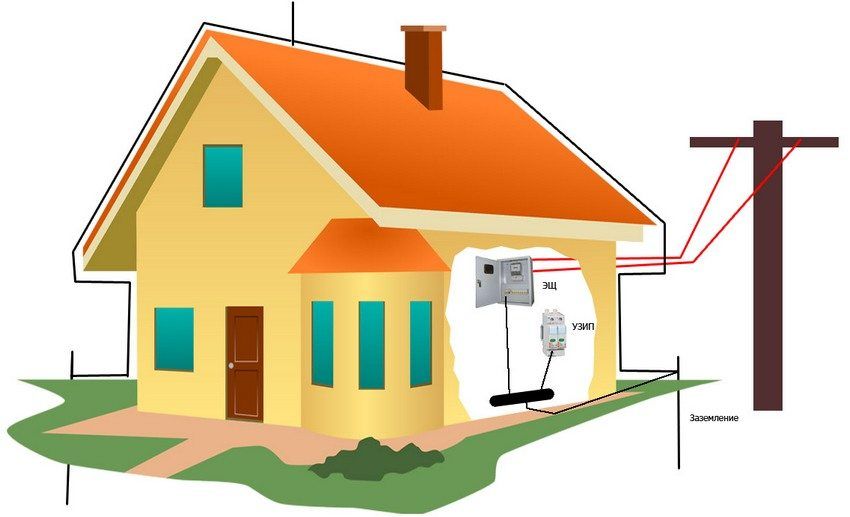
Helpful advice! It is impossible to use armature for the ground loop, since its surface is rapidly oxidized, and it also does not allow the electric current to be evenly distributed.
Usually the ground loop is made in the form of an isosceles triangle, which is located at a distance of 1-3 m from the foundation of the house. It is at this distance that a trench about a meter deep is dug, into which horizontal contour elements are laid. Vertical steel elements are driven into a depth of about 3 m so that about 20 cm remains on the surface.
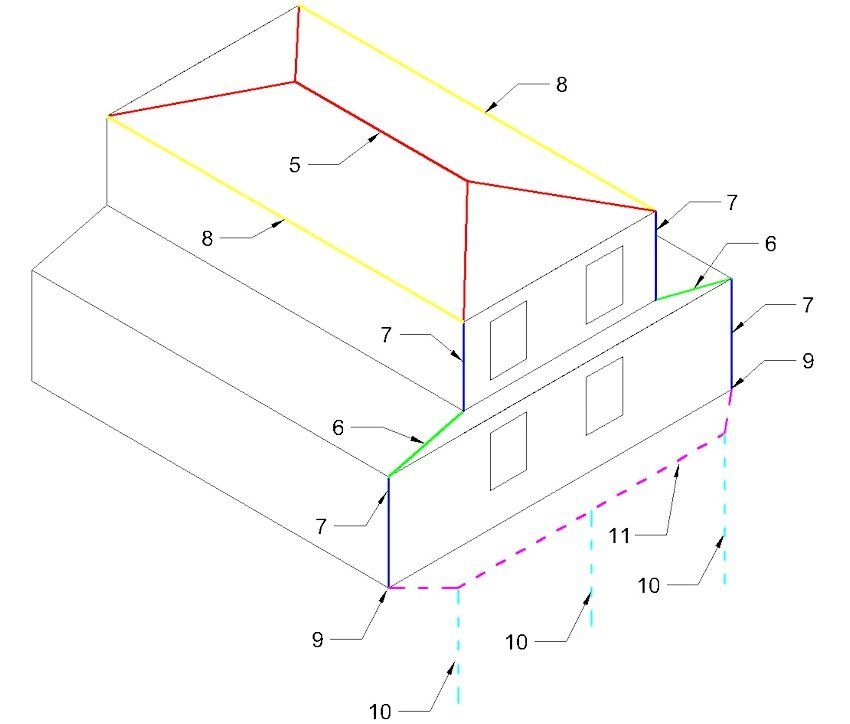
Then, along the perimeter of the contour, a steel strip is welded, which connects the vertical pins. A steel conductor for grounding is bolted to the switchboard housing. How to make ground loops in a private house more efficient? To do this, the junction of the conductor and the ground loop must be carefully cleaned. Also, one option is to lay a steel strip with a cross-sectional area of at least 16 mm? from switchboard to contour.
Another way to increase grounding efficiency is to replace the steel core with a flat steel strip. Due to the larger area of contact with the ground, the conductivity of the current is also higher. However, it is more difficult to lay the steel strip into the ground than the core, it has to be laid into the soil in pieces, and then welded together. It uses exclusively the welding method.
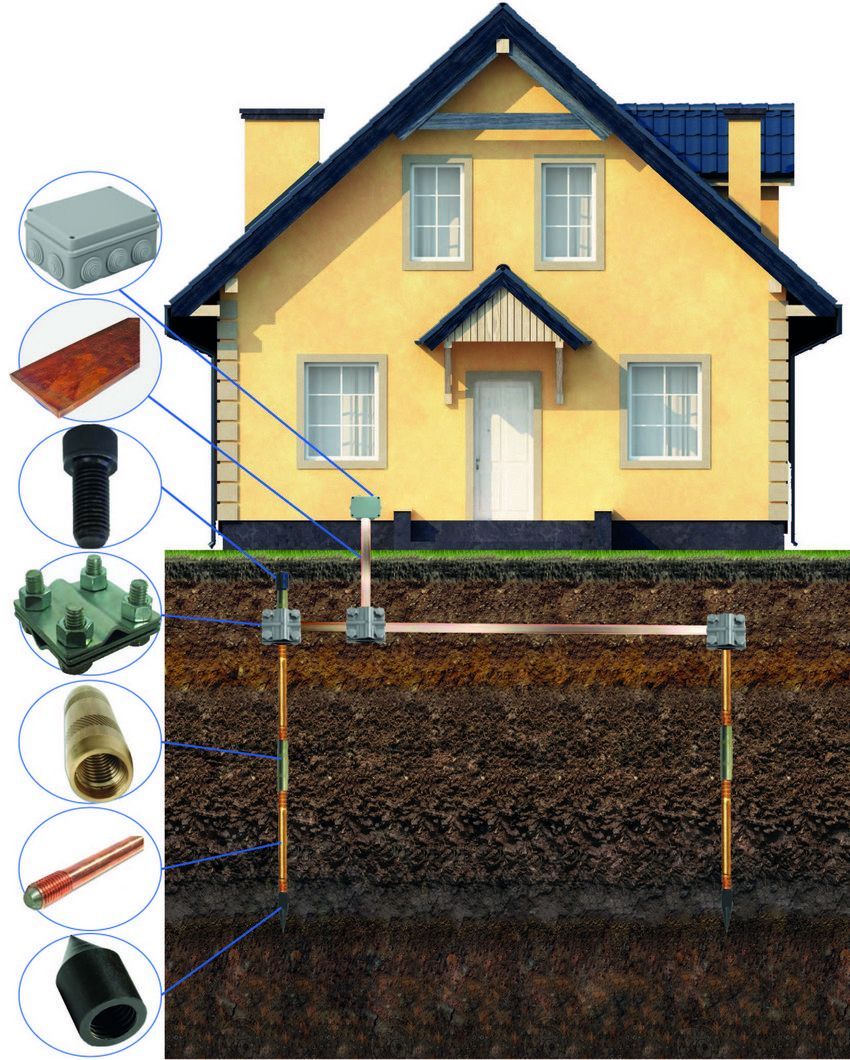
If you have read or heard how to make proper grounding in private homes, then you probably know that using bolts for connecting structural elements can lead to very negative consequences. The fact is that the bolts quickly oxidize, which is why the circuit ceases to conduct electricity. For the same reasons, it is impossible to paint the contour frame, because of the paint, the current ceases to flow into the ground.
Helpful advice! If the device of the ground loop can not do without the use of bolts, they should be located above the ground surface, be securely tightened and carefully cleaned. From time to time the bolts should be lubricated with a special conductive grease.

How to do grounding in a private house with your own hands: 220V and 380V with the old wiring
Many owners of private houses and apartments are familiar with the problem of old and dilapidated wiring, to which it can be very difficult to connect the ground. The only correct option in this case is to completely replace the old wiring with a new one. However, not everyone can afford it, so sometimes you have to manage with what you have.
If it is not possible to replace all the wiring, then at least you need to install new sockets, switches and junction boxes. At the same time, there is no need to change their layout. When installing new outlets, a very important point is the control of the ground wires. They must be located in distribution boxes and reach the ground bus through a switchboard. Its mount is mounted on the body of the shield.

Another relatively simple and cheap option of how to properly make the grounding in private homes is a complete disconnection of the old wiring. In this case, it is simply disconnected from the shield and remains in the wall, and the new wiring is laid outside. Plastic covers will serve well for this purpose, and new switches and sockets can be installed in existing holes in the walls.
To upgrade junction boxes, it will be enough just to remove the old wires from them. The new wiring scheme is relatively easy to assemble if you have all the necessary components on hand:
- cable channels to protect external wiring;
- wires;
- sockets, switches and junction boxes.
If you need to conduct new wiring in the old house and conduct grounding to the electrical equipment, you will also have to install a new switchboard. In this case, the old wiring can be left, but it is necessary to connect to it only low-power electrical appliances.

The overhaul of electrical wiring in the old house is long and expensive, a more budget option to protect yourself from fire and the possibility of a short circuit is to supplement this wiring with a single ground wire. It can even not be laid inside the wall, but simply laid in a plastic cable channel.
The advantages of this option are obvious: the cable channel fits perfectly into any interior and is well attached to any material. A channel is usually conducted between distribution boxes, as well as from a distribution board. In each junction box, all grounding wires must be interconnected and reach the ground bus.
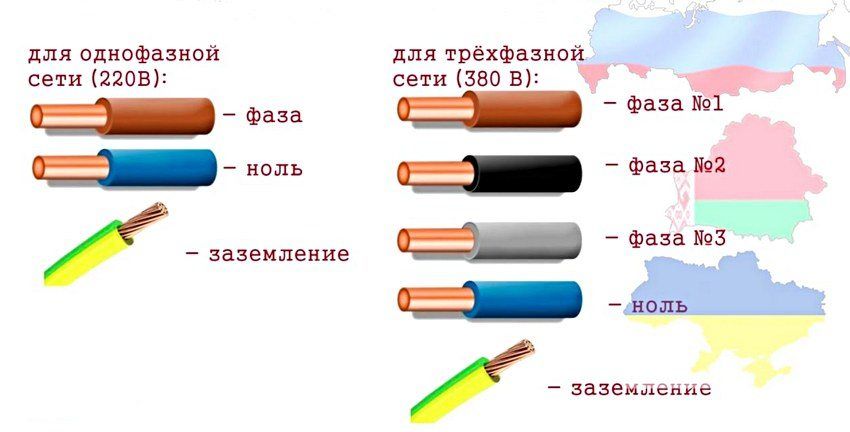
Grounding is the connection of parts of electrical devices with a grounding circuit. It is mounted so that the voltage that may occur on the device body goes into the ground. The following parts of grounding are distinguished:
- An earthing switch is a collection of all conductors that are in a state of electrical contact with the ground.
- Grounding devices – grounding plus grounding conductors.
- Conductor – connection of an electrical device, which may be energized, with a grounding conductor.
Helpful advice! The earthing switch must always be made of unpainted metal with good conductivity, otherwise it will be ineffective.
Any ground is characterized by a number of parameters, the most important of which is spreading resistance. It is the value of this parameter that shows how easily the electric current will cover the distance from the body of the appliance to the ground. The lower the spreading resistance, the better. This parameter is influenced by the depth of laying the ground rods, the soil moisture, the metal from which the conductors are made, and much more.
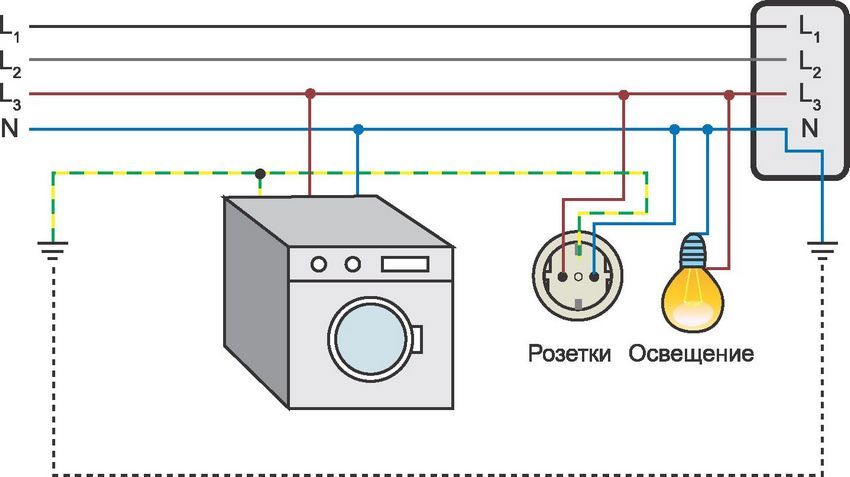
By the way, the optimal place to bury ground loops in a private house with your own hands is the north side of the house, as there is usually maximum soil moisture. Accordingly, the spreading resistance will be minimal.
Grounding requirements are as follows:
- the length of the vertical bars should not be less than 16 mm;
- horizontal – from 10 mm;
- minimum steel thickness – 4 mm;
- minimum diameter of steel pipes – 32 mm.
Before starting the installation of the ground loop, you must select a place under it. There should not be any communications at the place chosen for driving rods, and in order to make sure of this, it is necessary to coordinate the site with the appropriate services: gas, water, telephone and heat-energy supply. Even if you are sure that there are no communications on your site, it is better to check this through the appropriate services, otherwise repairing damaged lines will be very expensive.

The ideal place for the location of the ground loop – the blind area of the house. It is best to make the contour linear, you can also lay it around the perimeter, if it has the means, time and desire. Most often, grounding is done in the form of various geometric shapes, such as a triangle, a polyhedron, or a rectangle. Linear contour installation is good because you can always increase it if you want and need.
How to make grounding in a private house as simple as possible? To do this, it is enough to drill a hole with a depth of approximately 2 m using a hand drill and drive the first earthing rod into it. If he entered the ground easily, the next one can drive a little deeper, but you shouldn’t exceed the depth of 3 m, otherwise the earthing switch may simply get stuck.
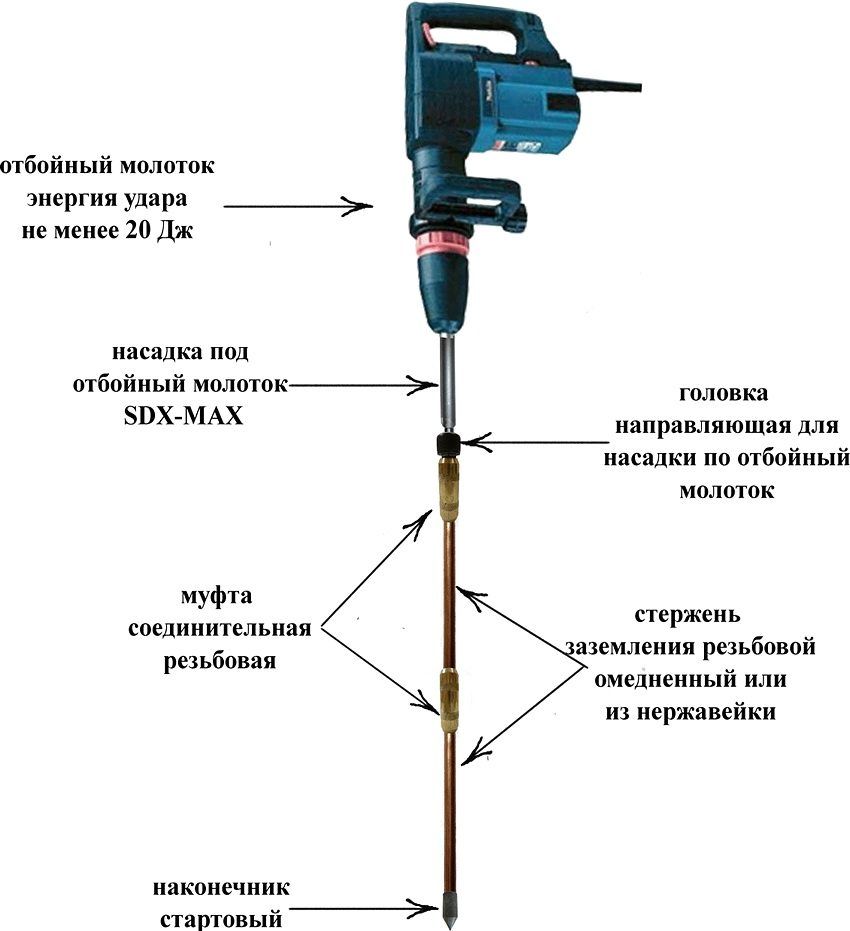
After all grounding devices are driven into the ground, they must be cut from above about 15-20 cm below ground level. Then between them it is necessary to dig a ditch of the corresponding depth along which to lay connecting rods. You can fix them with welding or bolted connections, but the latter option will have to periodically check, remove rust and tighten the contacts.
Helpful advice! It is best to interconnect the elements of the ground loop by welding. Then you will not have to constantly check the contour, and the spreading resistance will remain constant even after several years.
Grounding in a private house with their own hands 220V and 380V has different resistance. With proper installation, for the first version it is up to 30 Ohms, for the second – up to 10 Ohms. Also, this parameter largely depends on the resistivity of the soil in which the contour is laid, for example, for rocky soil, high rates are simply impossible.
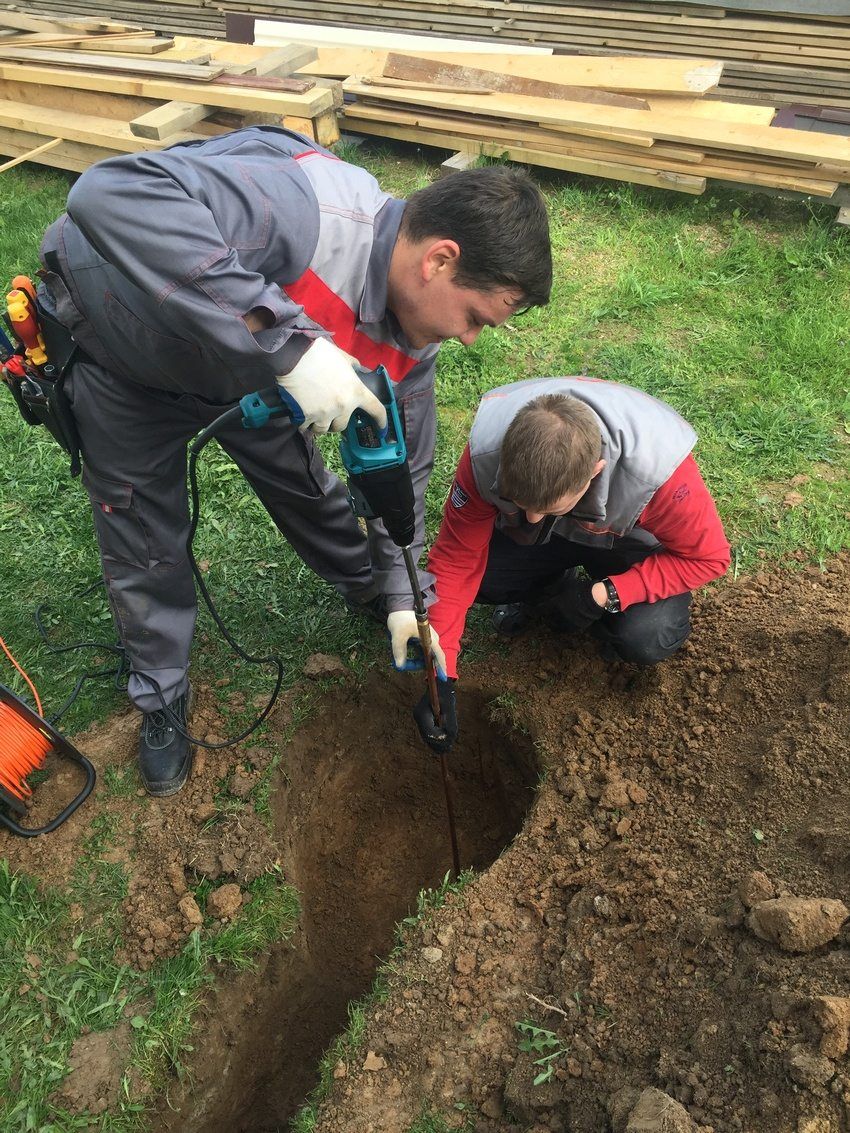
Remember that with a three-phase power supply, it is necessary to make grounding in a private house with your hands 380V.
The principle of grounding is based on the elementary laws of physics. One of them says that the larger the area of contact of the contour with the ground, the more efficient the grounding works. From here follows a series of simple rules:
- Do not assume that one metal pin, driven into the ground, is enough for a full ground loop. The best option is one or even two triangles, buried to a depth of about 3 m.
- In no case do not use for mounting the ground loop metal products that have a hardened surface, for example, rails, fittings or channel bars. Due to the increased surface density, contact with the ground can be very bad or even absent.

If you choose between one or two ground loops, and also calculate the total area, then you should focus on the number and total power of electrical appliances in the house. If it’s just about grounding the washing machine with your own hands, then one small triangle is enough, but if there are many more electrical appliances in your house, then it’s better not to risk and make a ground around the perimeter of the house.
Helpful advice! Whichever metal you choose to install a ground loop, it will still be exposed to corrosion, which in 2-3 years can minimize the effectiveness of the loop. Therefore, before digging the contour elements into the ground, they should be covered with special protective conductive coatings.
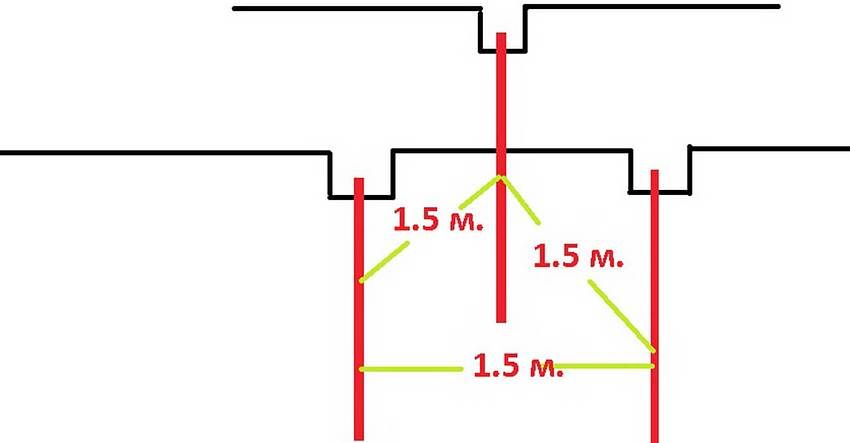
Grounding in a private house with their own hands, 220V and 380V, must necessarily be deeper than 1 m. Otherwise, the capacity of the house may become higher than the capacitance of the circuit, which will lead to the rise and increase of excess current within the network. And this, in turn, can seriously damage the electrical equipment in the house.
Good grounding should constantly increase in cross section. For example, if the cross-sectional area of a conductor that goes from the switchboard is 5 mm, then the cross-section of the tape should be twice as large, and the pins driven into the ground should be twice as large as the tape.

